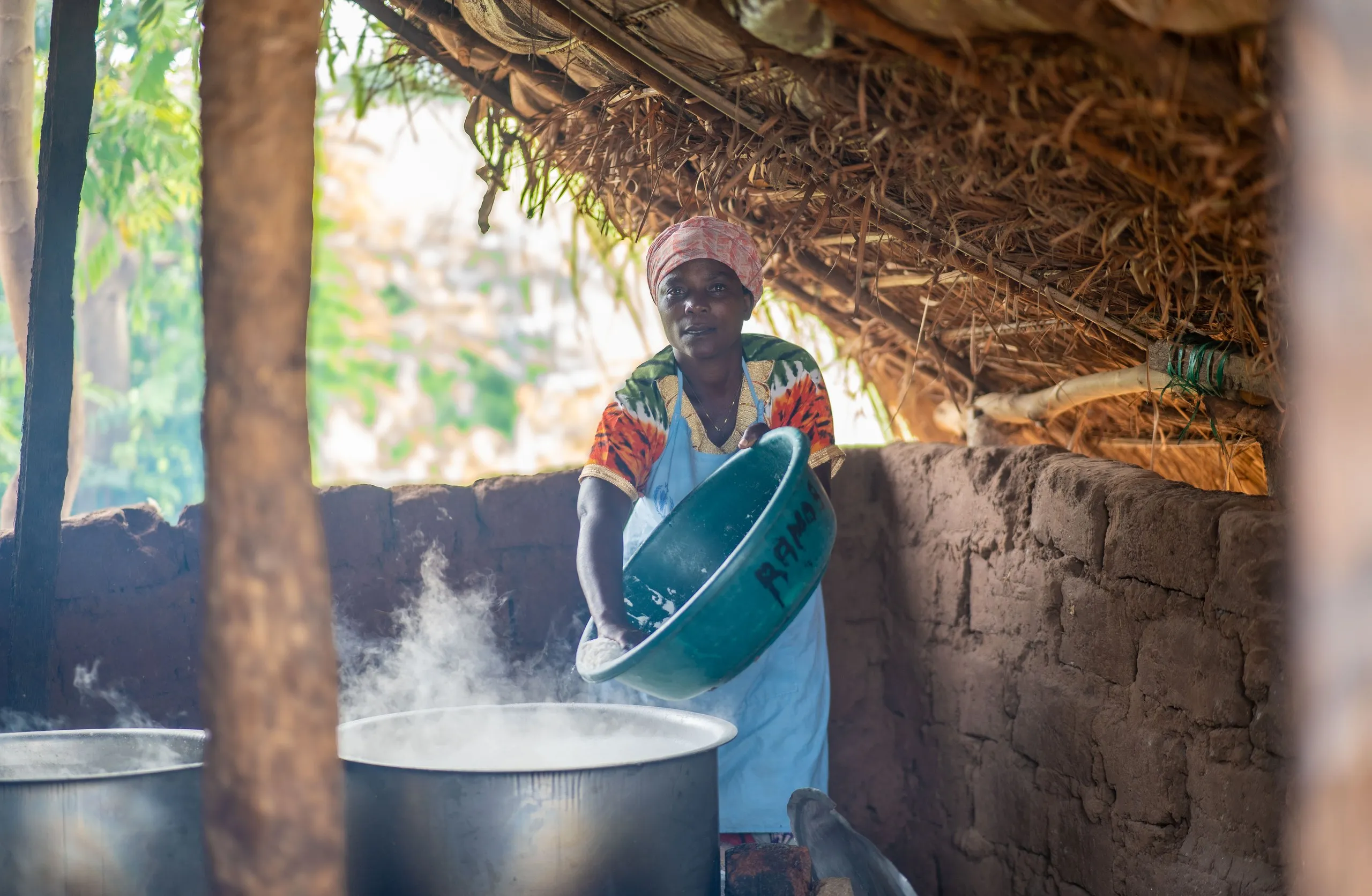Chapter 03
Farmers working on their land
Scroll to read the full story
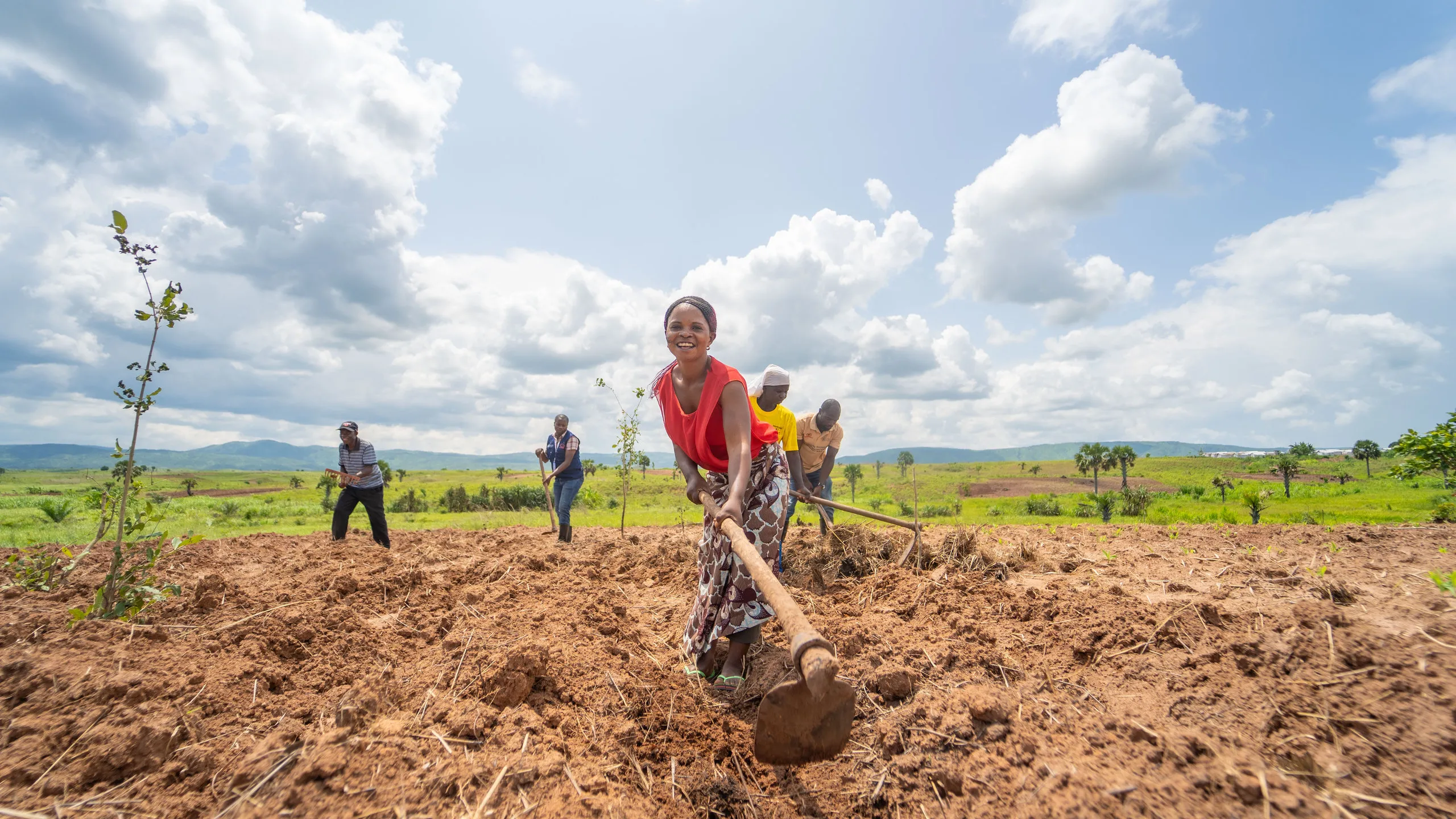
The Democratic Republic of the Congo is one of the largest and most geographically diverse countries in Africa. It is the second-largest country in Africa, covering approximately
2.345.000km²
four times the size of countries like Spain, Thailand, or Yemen. Its vast territory includes fertile lands, dense forests, and rich natural resources.
Agriculture plays a central role in daily life for Congolese families. Across the country, many families depend on the land to sustain themselves. Even so, limited access to land and unresolved issues around land ownership continue to cause tensions, particularly in the eastern regions.
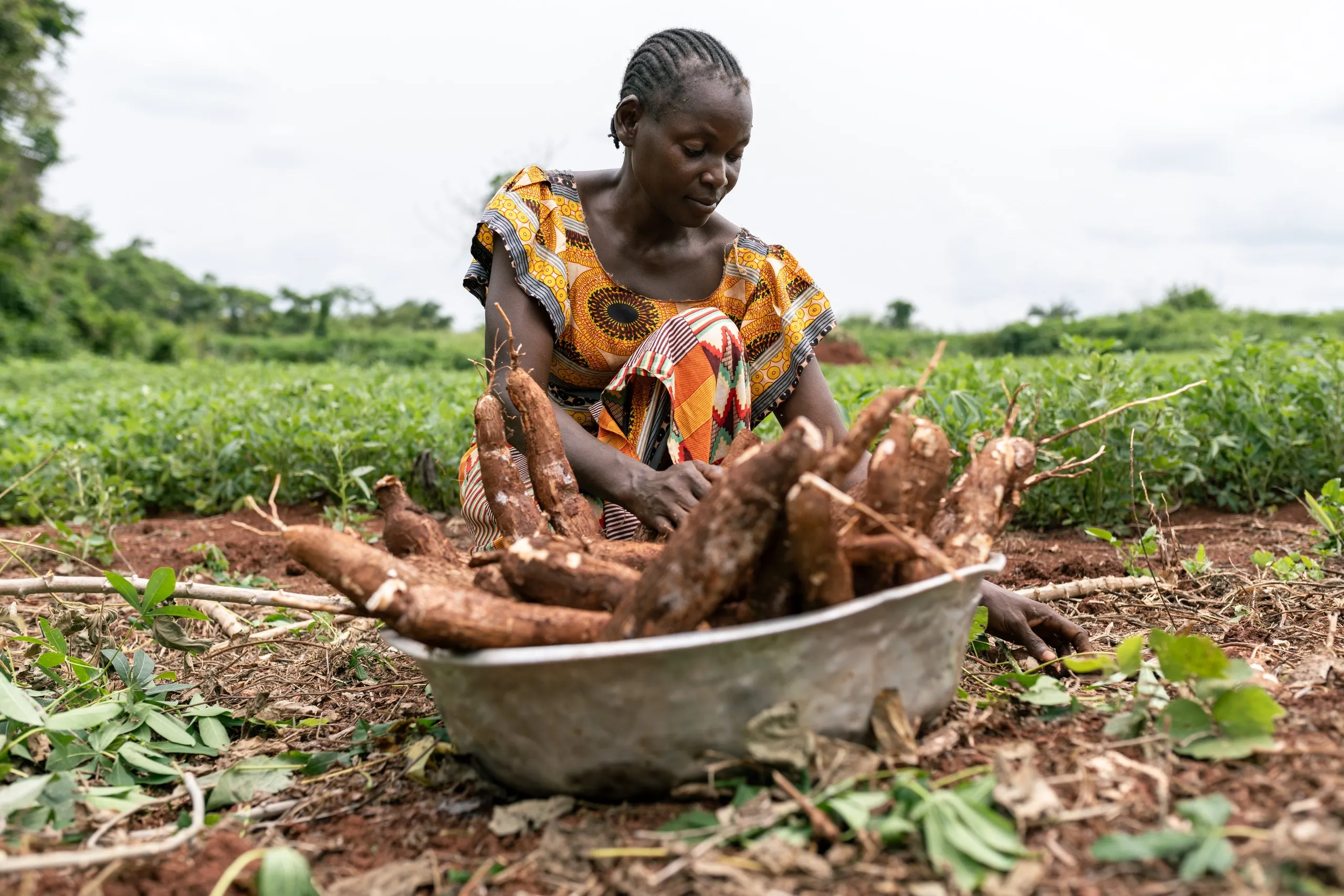
Despite these challenges, many are working the land and rebuilding their futures through agriculture. It remains a key source of income and food for communities, passed down through generations and shaped by local knowledge.
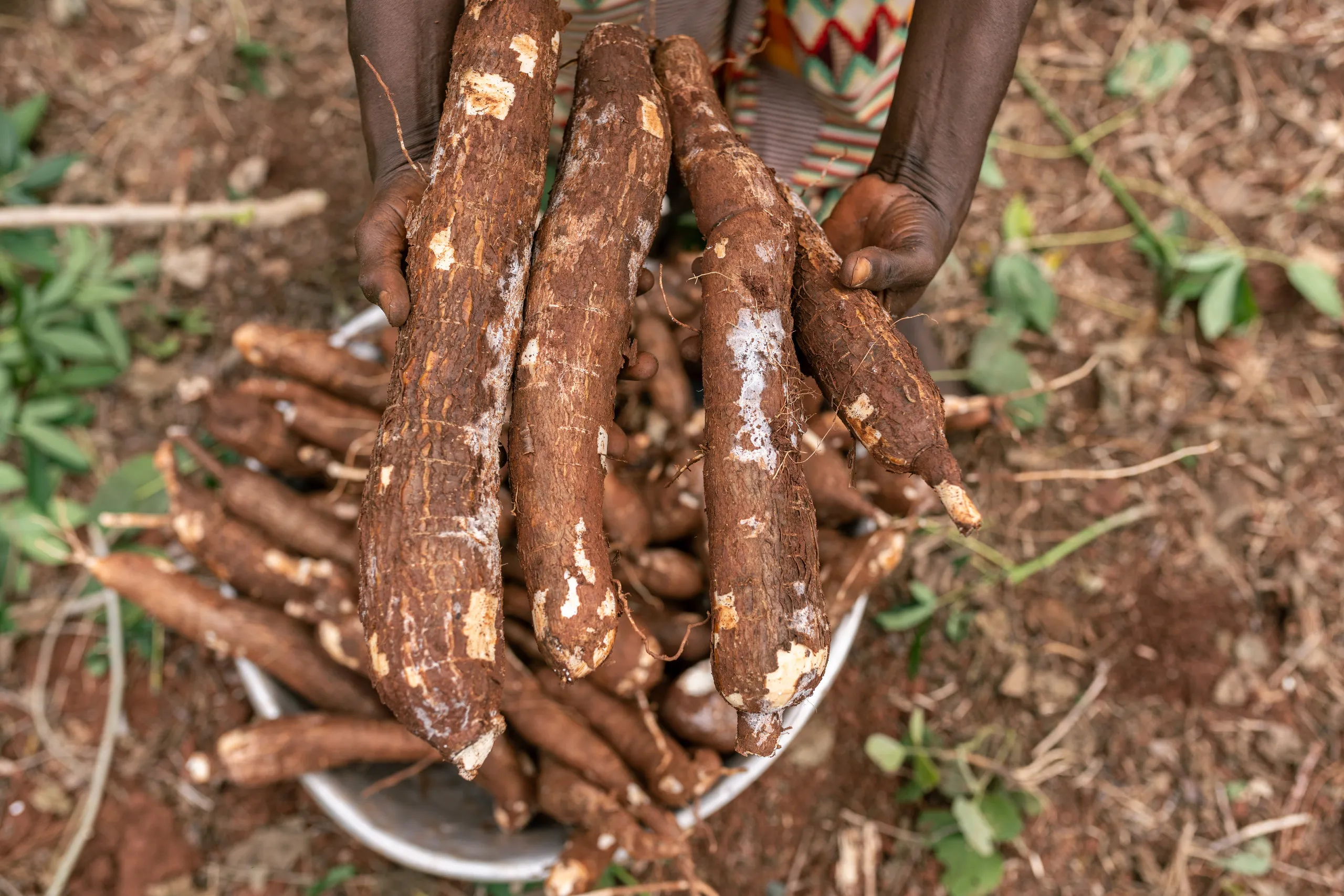
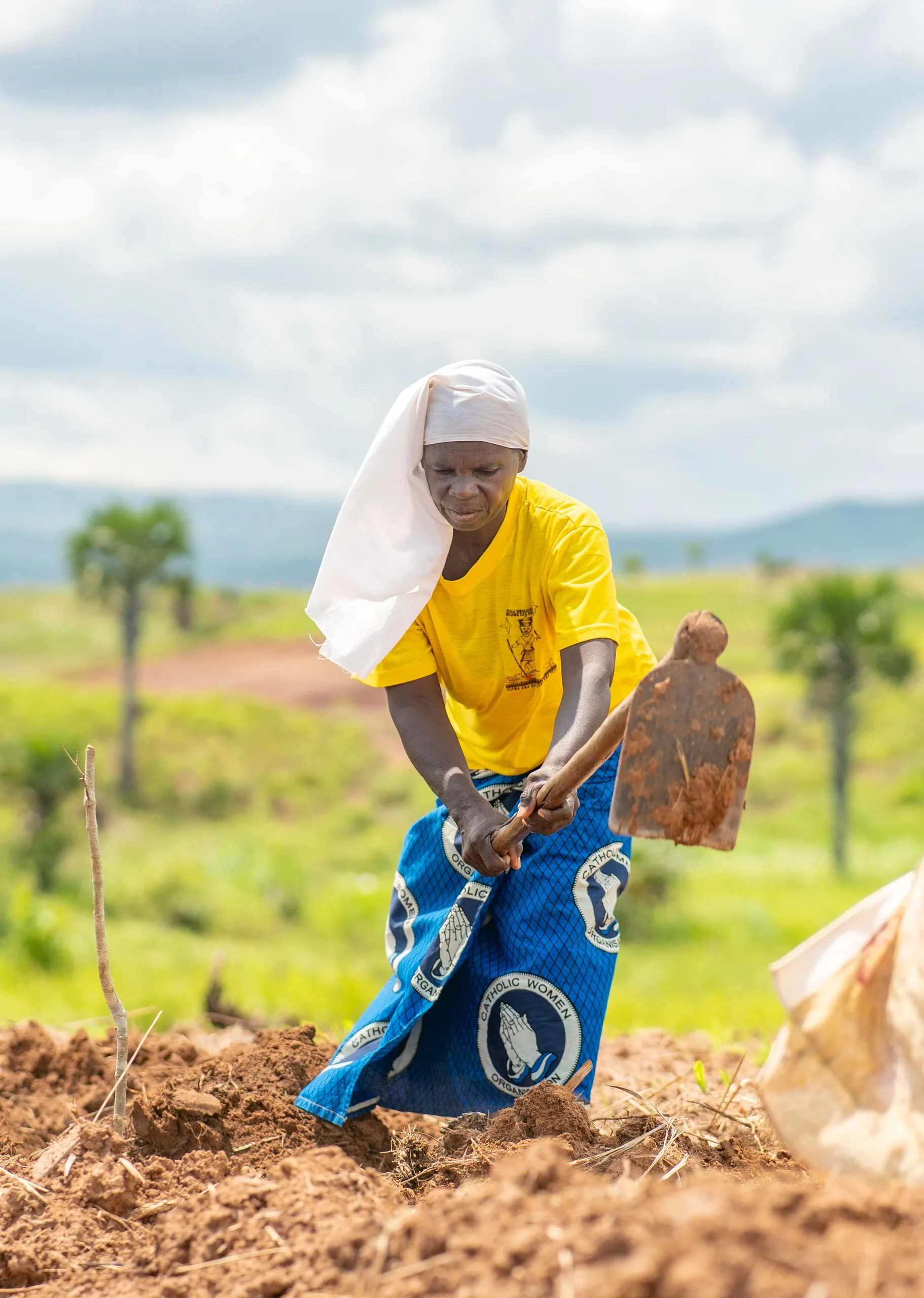
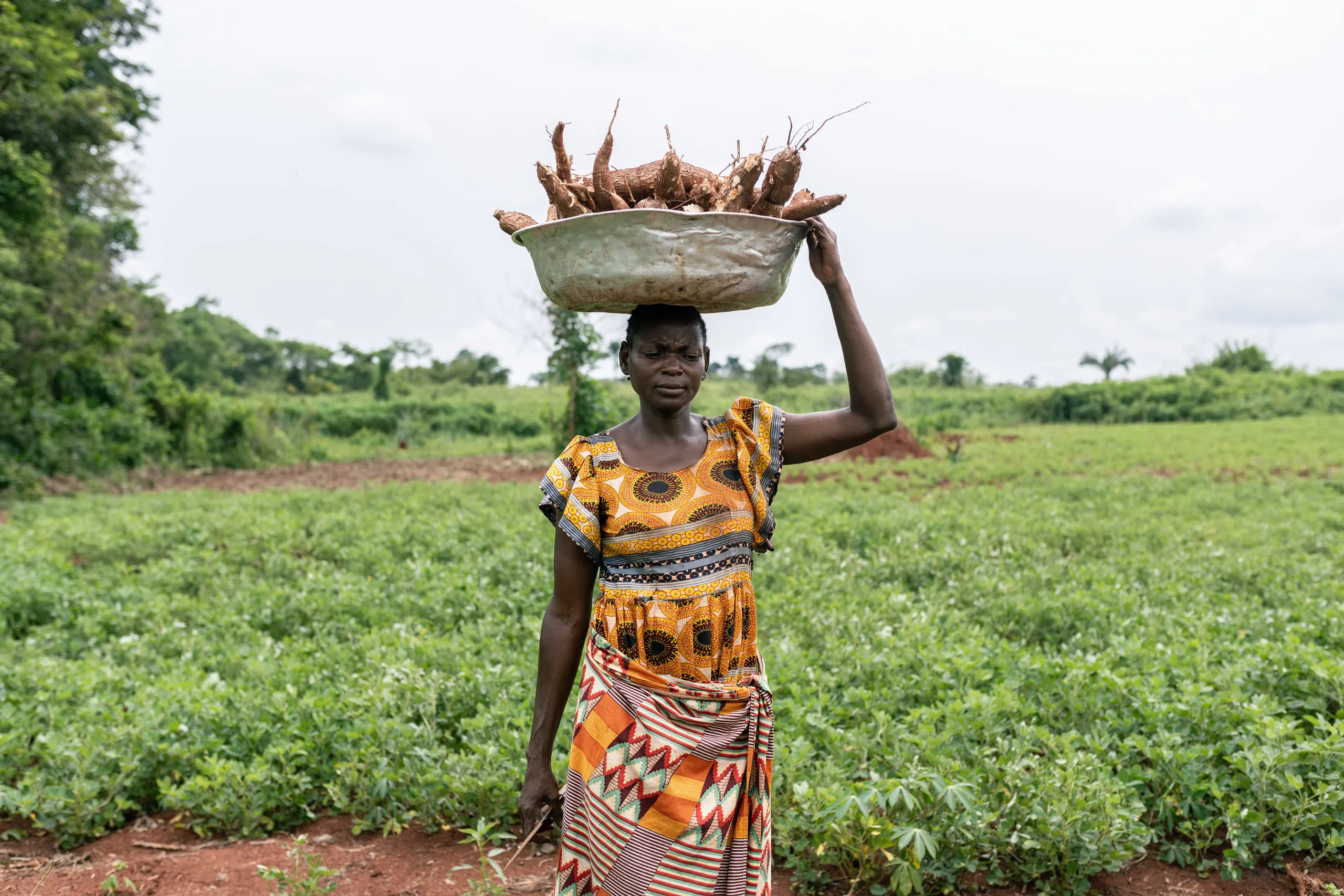
“When I wake up in the morning, I get my children ready to go to school. Then, I go to work in the fields. The work we, as parents, do in the community fields helps feed our children at school.”
Anastasie, Tanganyika
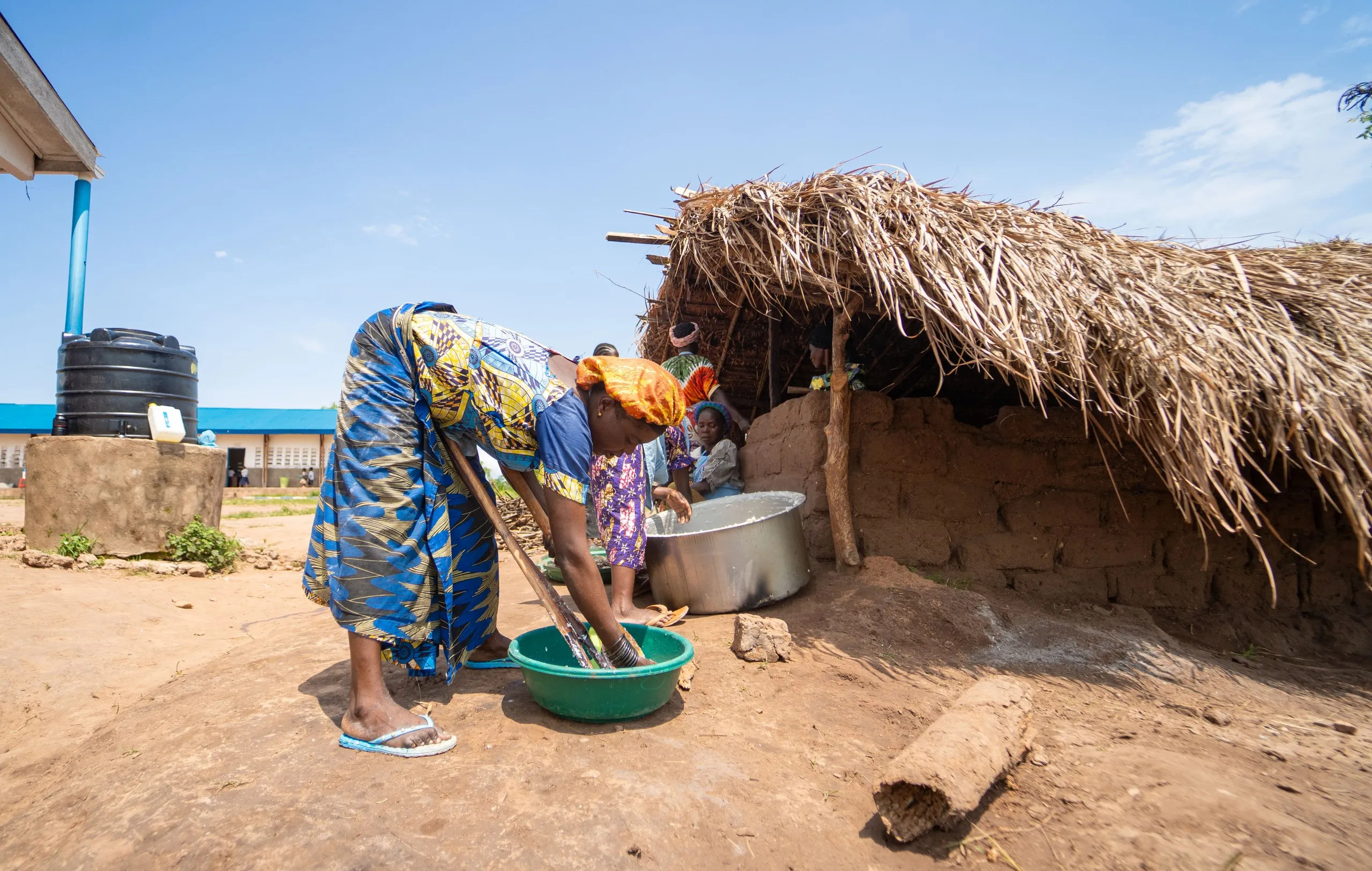

Alphonsine, Gilbert, and Generose are among those reclaiming their land. Their stories reflect a broader movement of people using agriculture not just to survive, but to create stability and opportunity.
Farmers working on their land
33 and 38, Kananga and Mbuji-Mayi
Alphonsine Ngalula and Felicien Lusamba
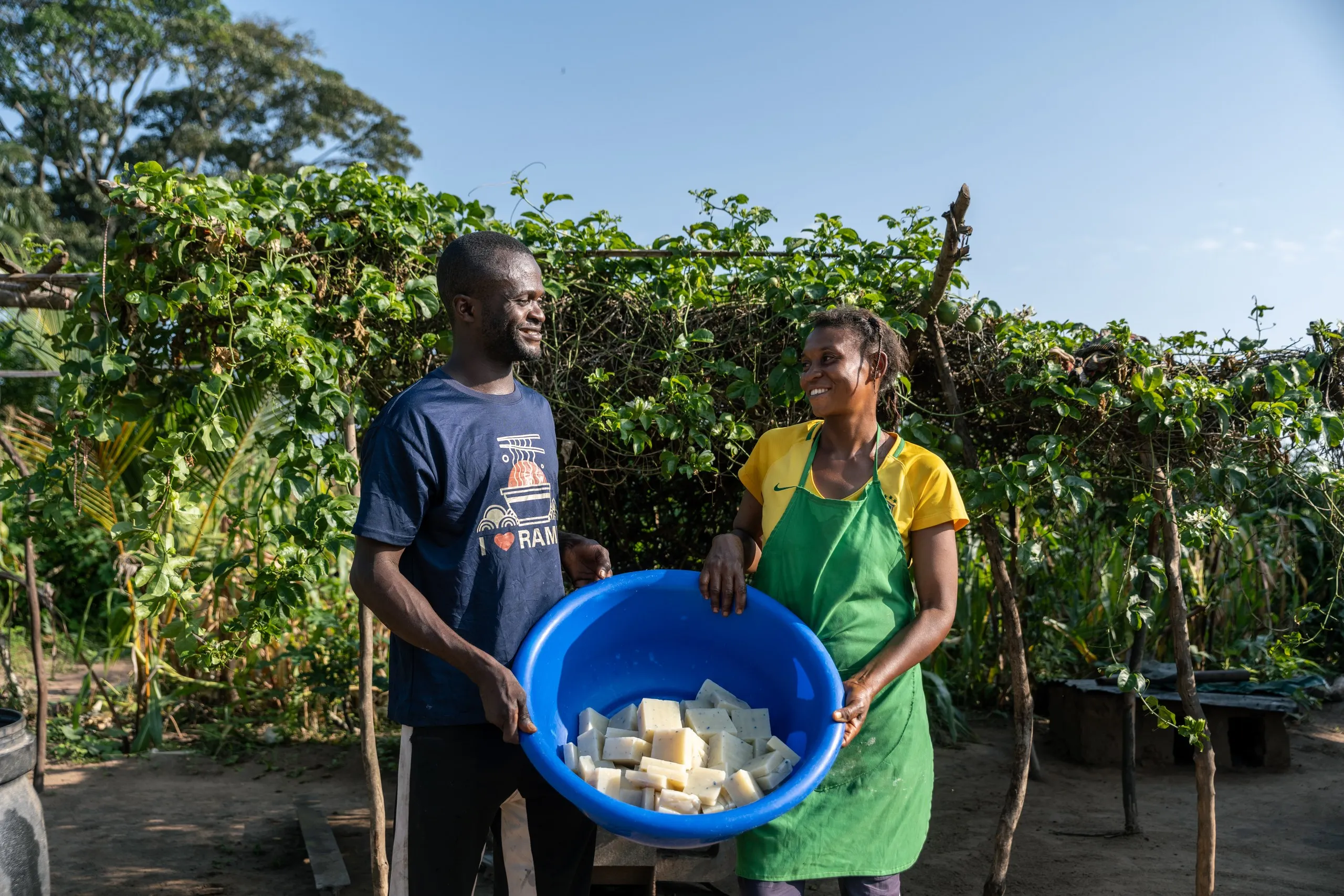
In the rural village of Nkonko, Alphonsine Ngalula Kayembe balances farming and soap-making while raising five children with her husband. With support from a WFP-backed programme, she received training in improved farming techniques and soap production, helping the couple increase both harvests and income.
Her husband, Félicien, once struggled to earn enough as a welder. Now, they work together producing Moussa soap—Alphonsine leads on production while Félicien supports with measuring and cutting. The soap business has brought greater stability and allowed them to send their children to school.
For the couple, the business is more than income—it's a partnership. “When she works, it lightens the burden for both of us,” Félicien says. Their story shows how shared opportunities can transform family life and create a path to a better future.
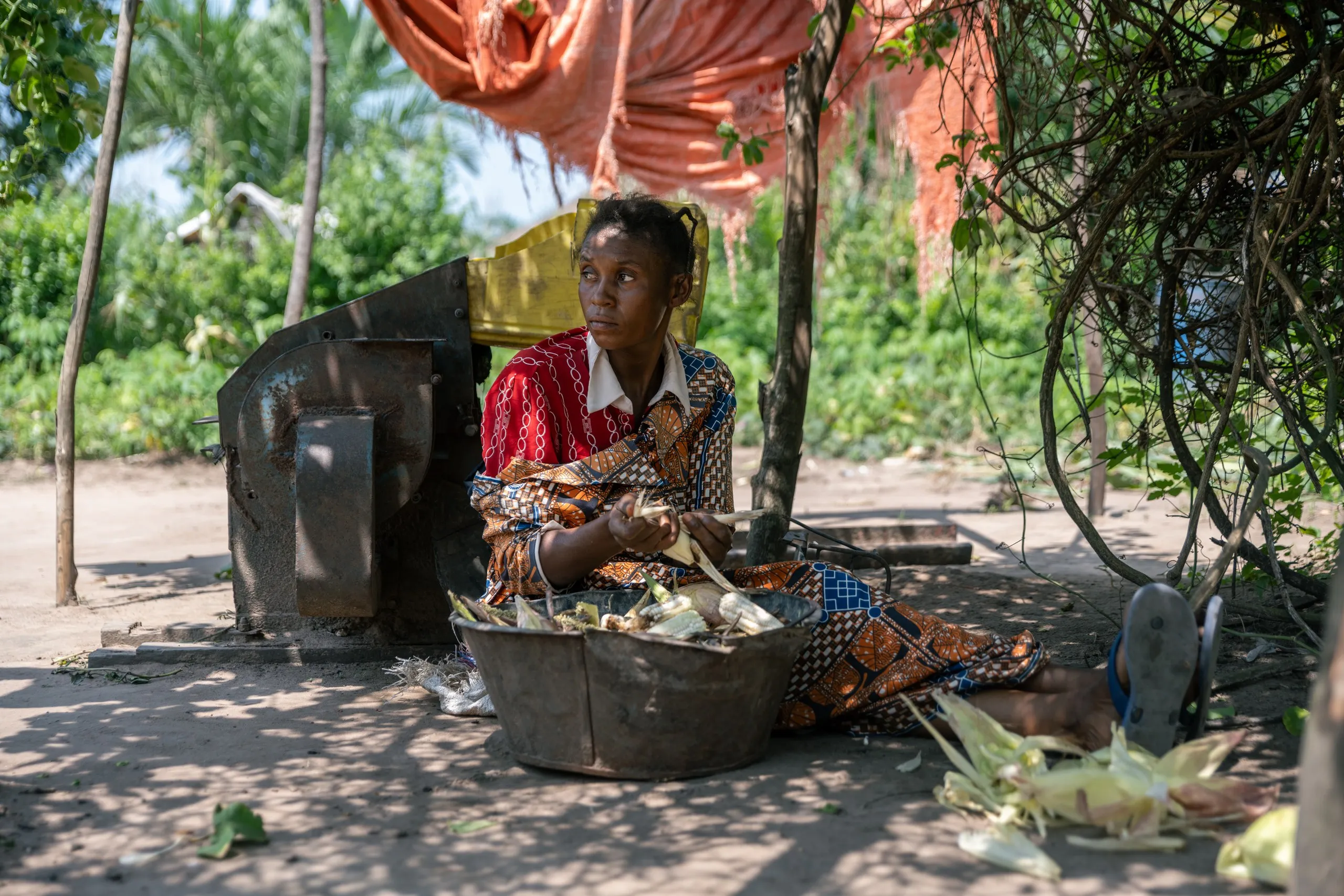
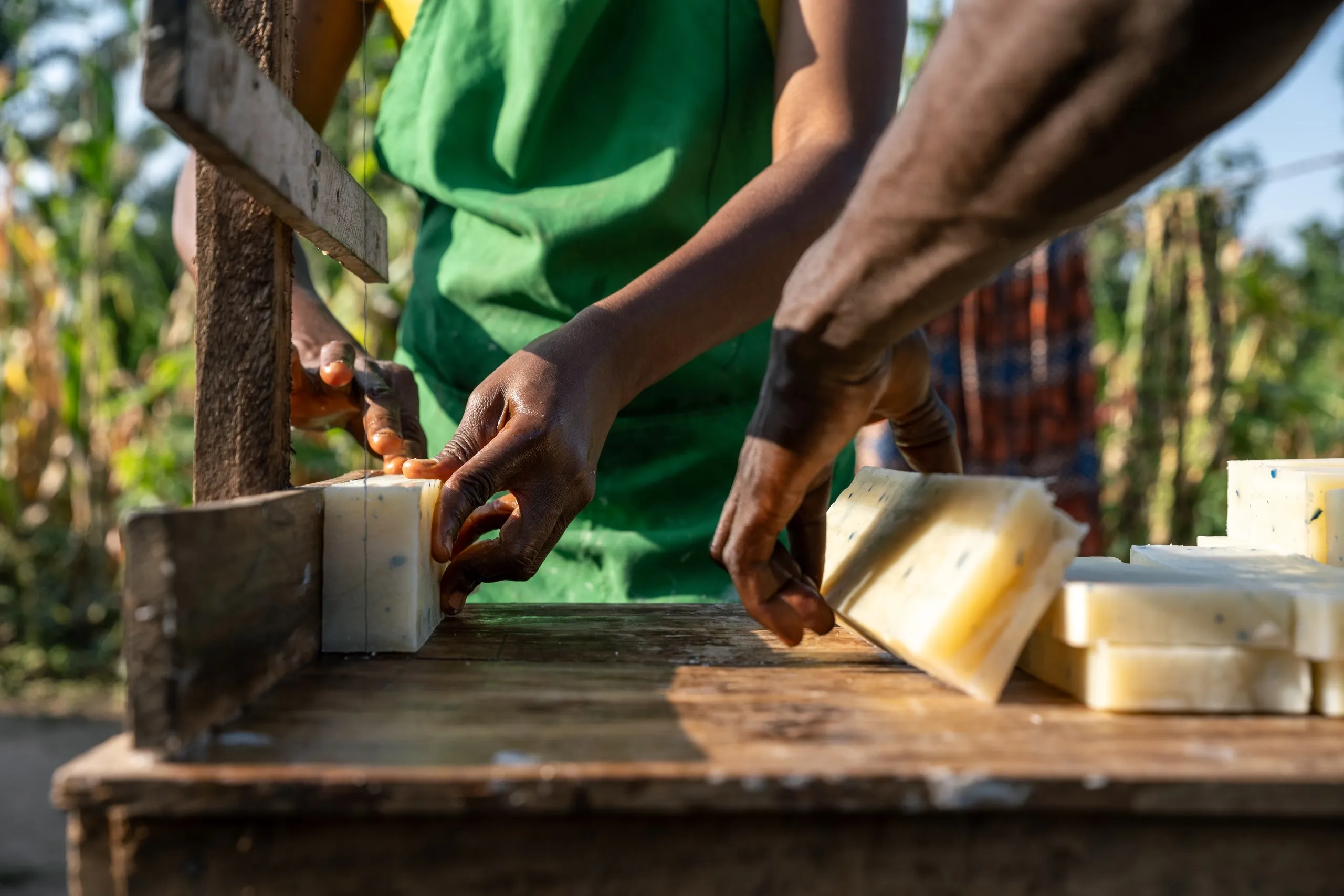
“Before joining the programme, I struggled to manage my business and farming effectively. But with the training, I've learned better techniques, increased my production, and can now send all my children to school.”
Alphonsine
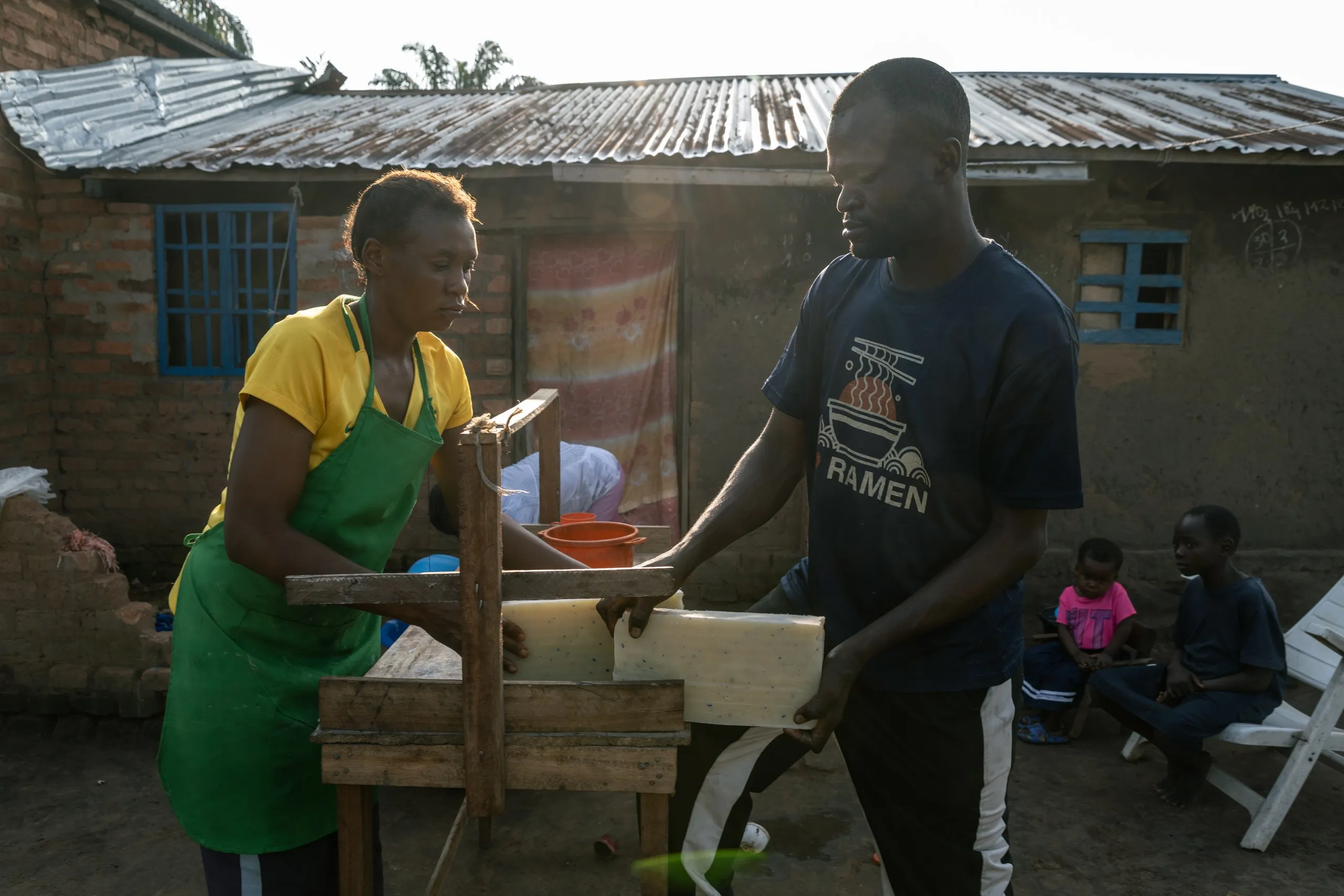
“Respect is mutual – when I respect her, she respects me. We're doing this for our children and for us.”
Felicien
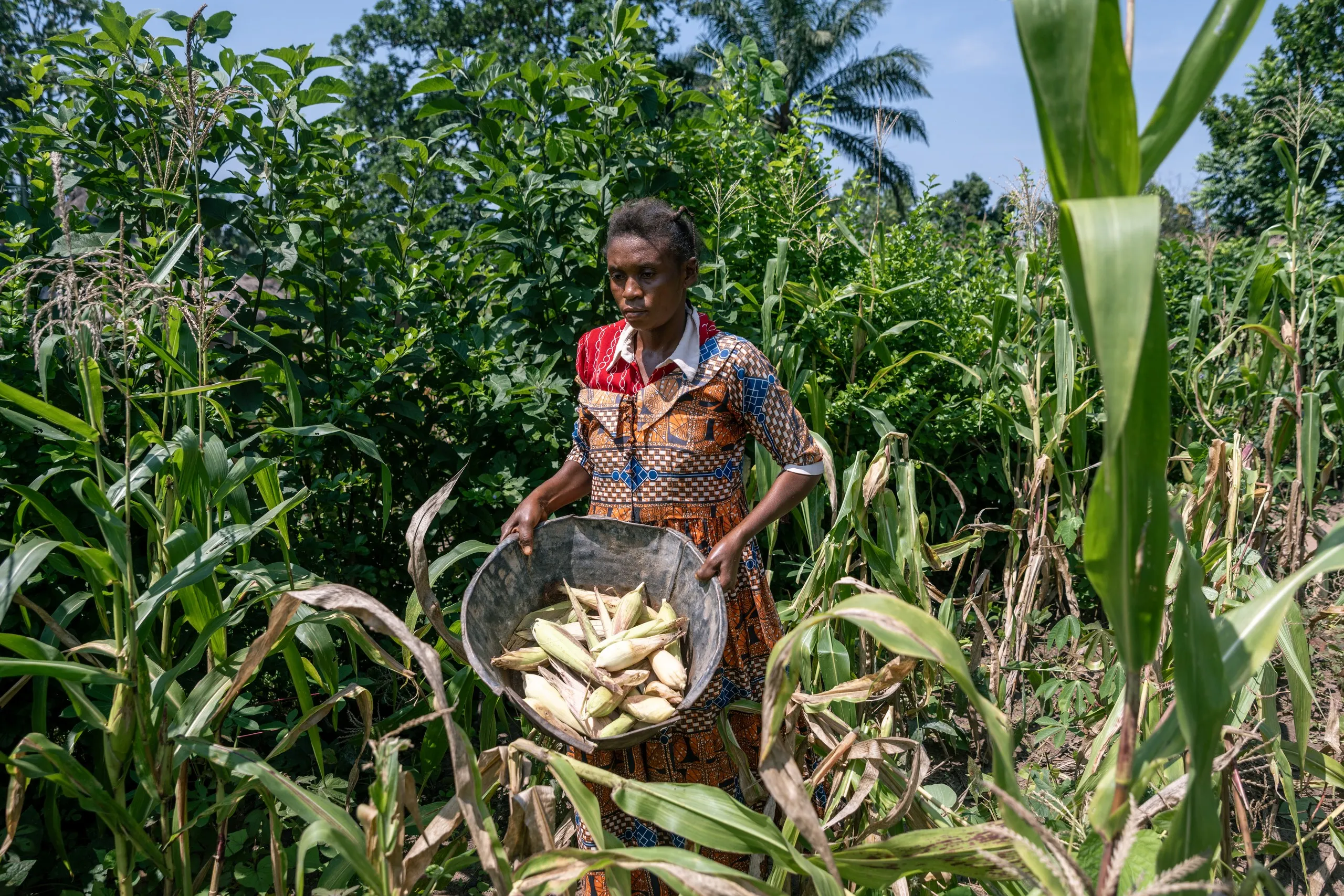
“All my children are in school now. Before, I could only afford to send some of them, and it was difficult. Now, thanks to my work, I can pay for all of them to learn.”
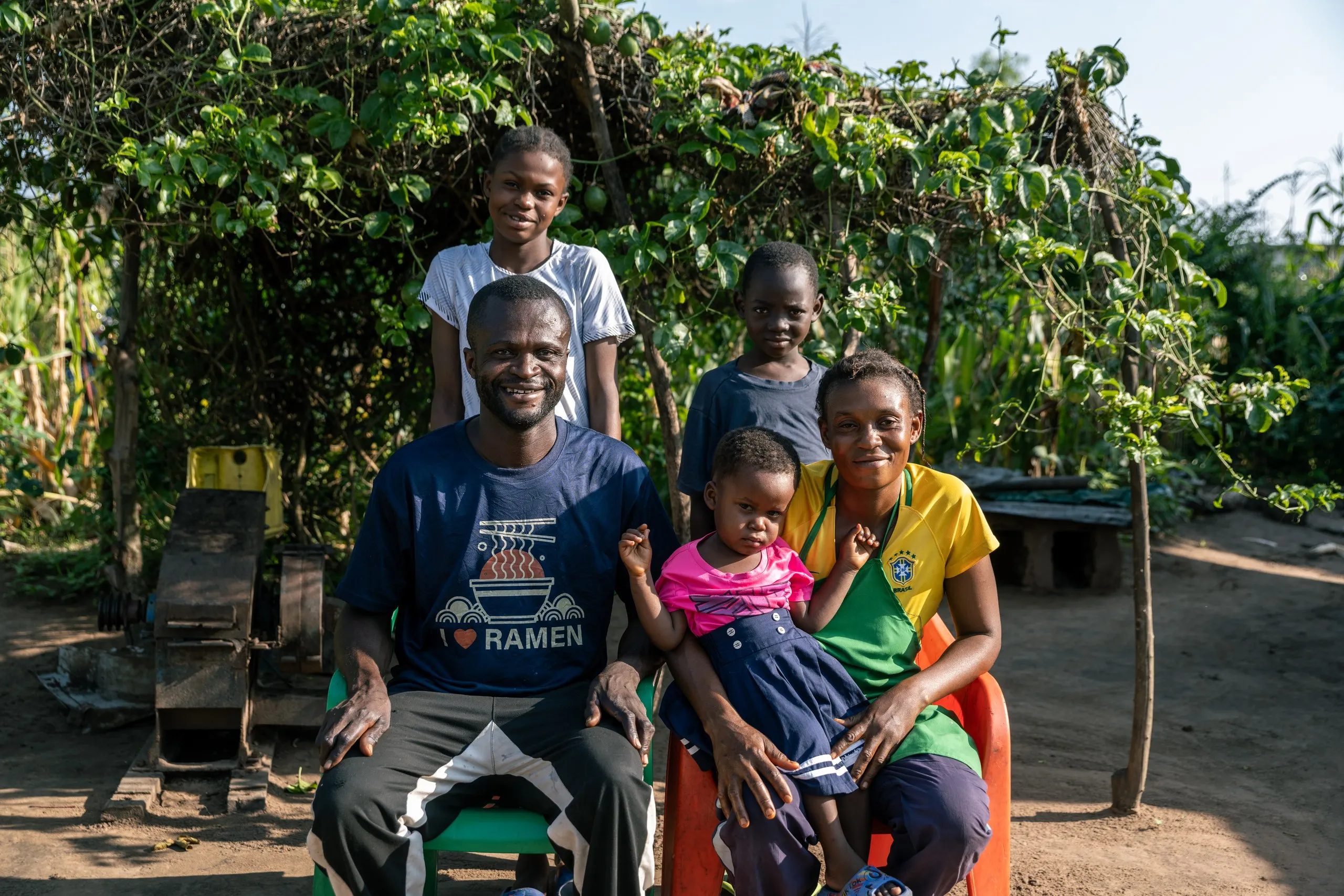
Farmers working on their land
Tanganyika
Gilbert Kakule
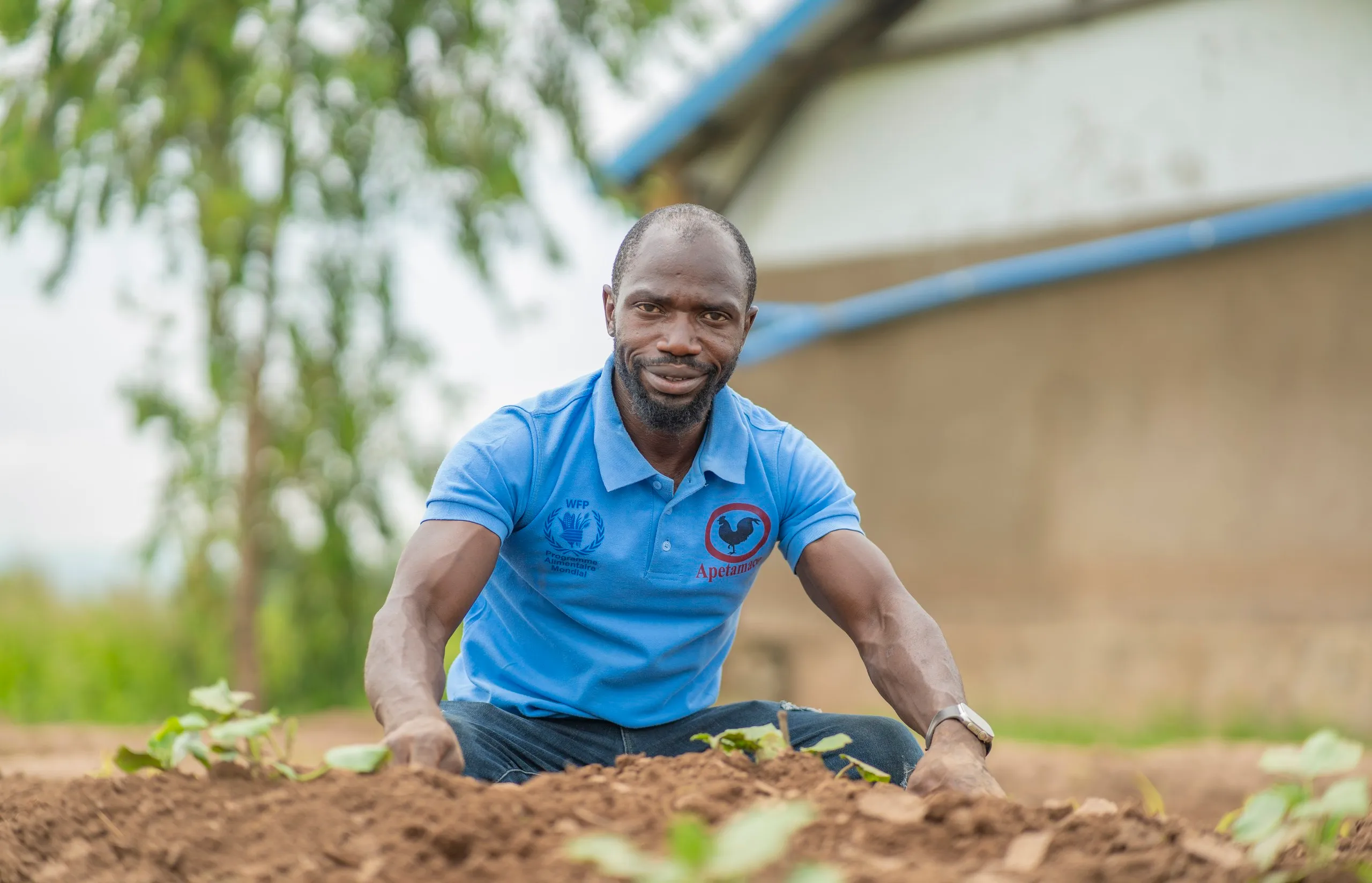
“My name is Kakule Kiberiti Gilbert, and I am one of the agronomy supervisors for APETAMAKO, a WFP partner in Tanganyika,” he begins, speaking with conviction about the work that shapes his days. His role is not just about growing food—it’s about sowing seeds of empowerment and self-reliance in the next generation.
Gilbert explains the vision behind introducing children to school gardens. “The goal is to teach them self-sufficiency. While WFP provides cereals, legumes, oil, and salt, it is also important to supplement these meals with fresh vegetables,” he says. By cultivating their own produce, students learn practical skills that enhance their school meals and their understanding of food systems. This initiative is about more than just nutrition. “One of the objectives of having community fields in schools is to remind everyone of their responsibility,” Gilbert says.
His words resonate with a simple yet powerful truth: feeding a child is a shared responsibility—one that unites students, parents, and communities in the pursuit of a better future.
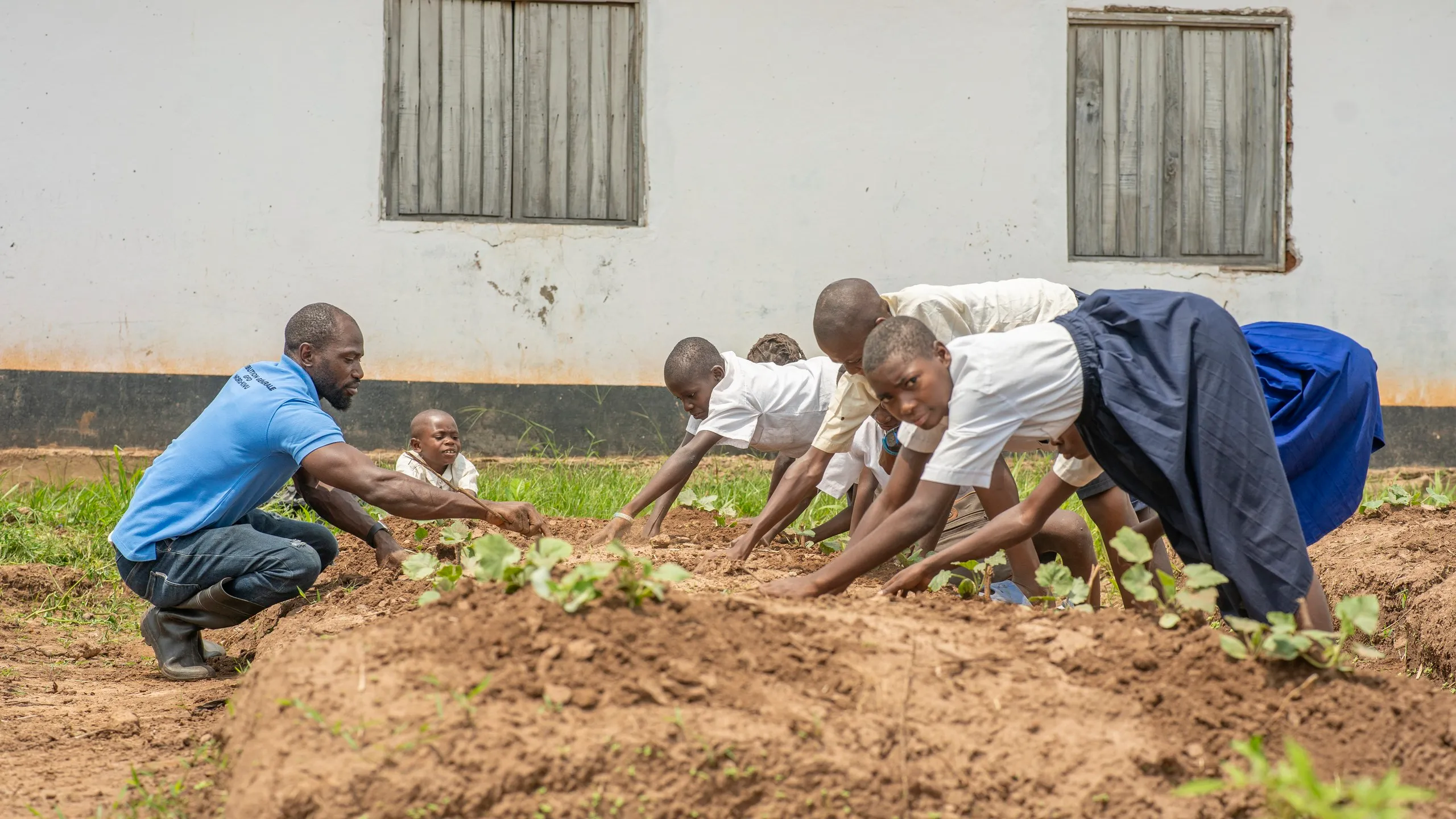
“The goal is to teach children self-sufficiency in school feeding activities. WFP provides cereals, legumes, oil, and salt, but it's important to supplement these meals with vegetables that the children grow themselves.”
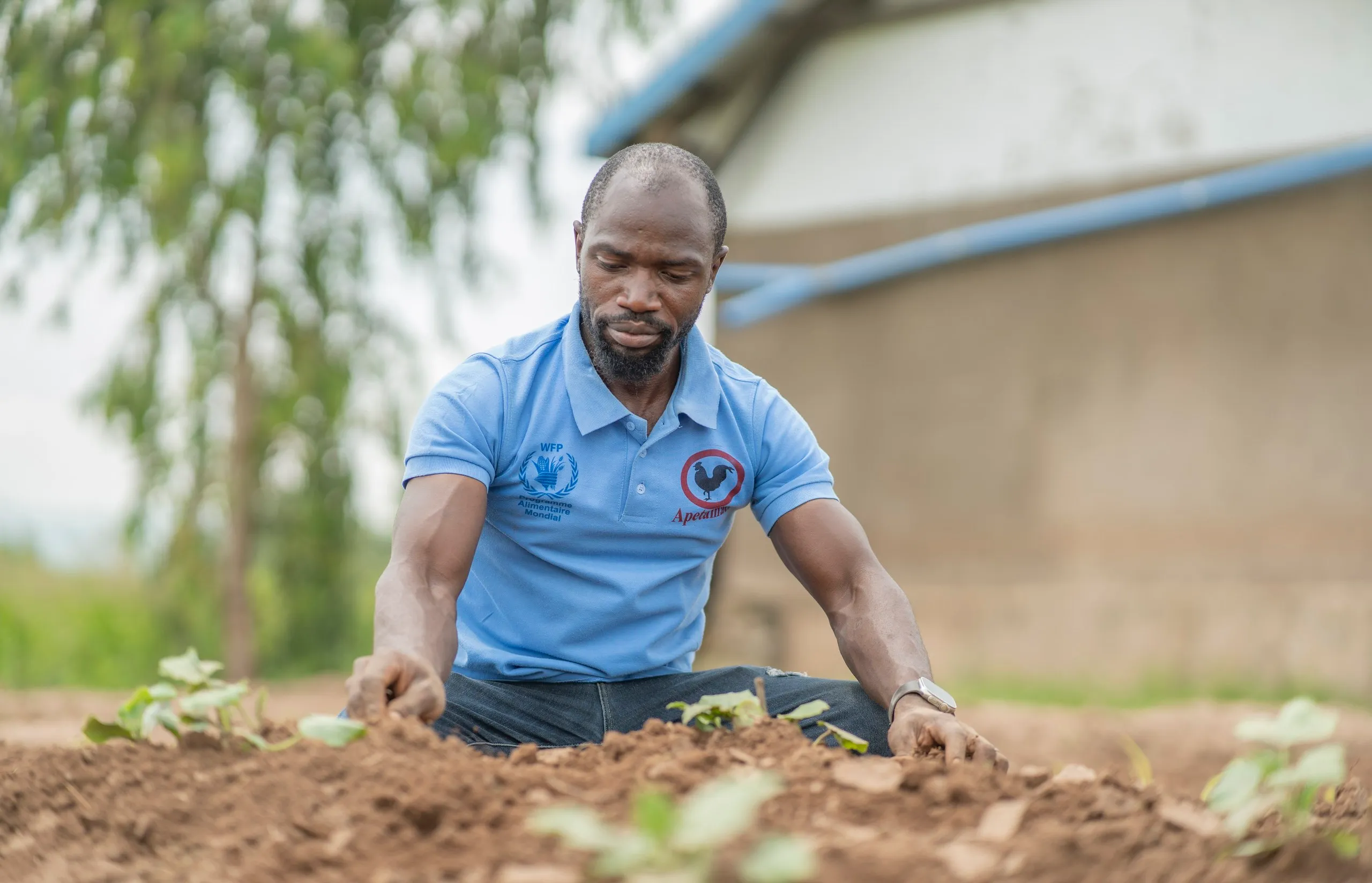
“The goal is to teach children self-sufficiency in school feeding activities. WFP provides cereals, legumes, oil, and salt, but it's important to supplement these meals with vegetables that the children grow themselves.”
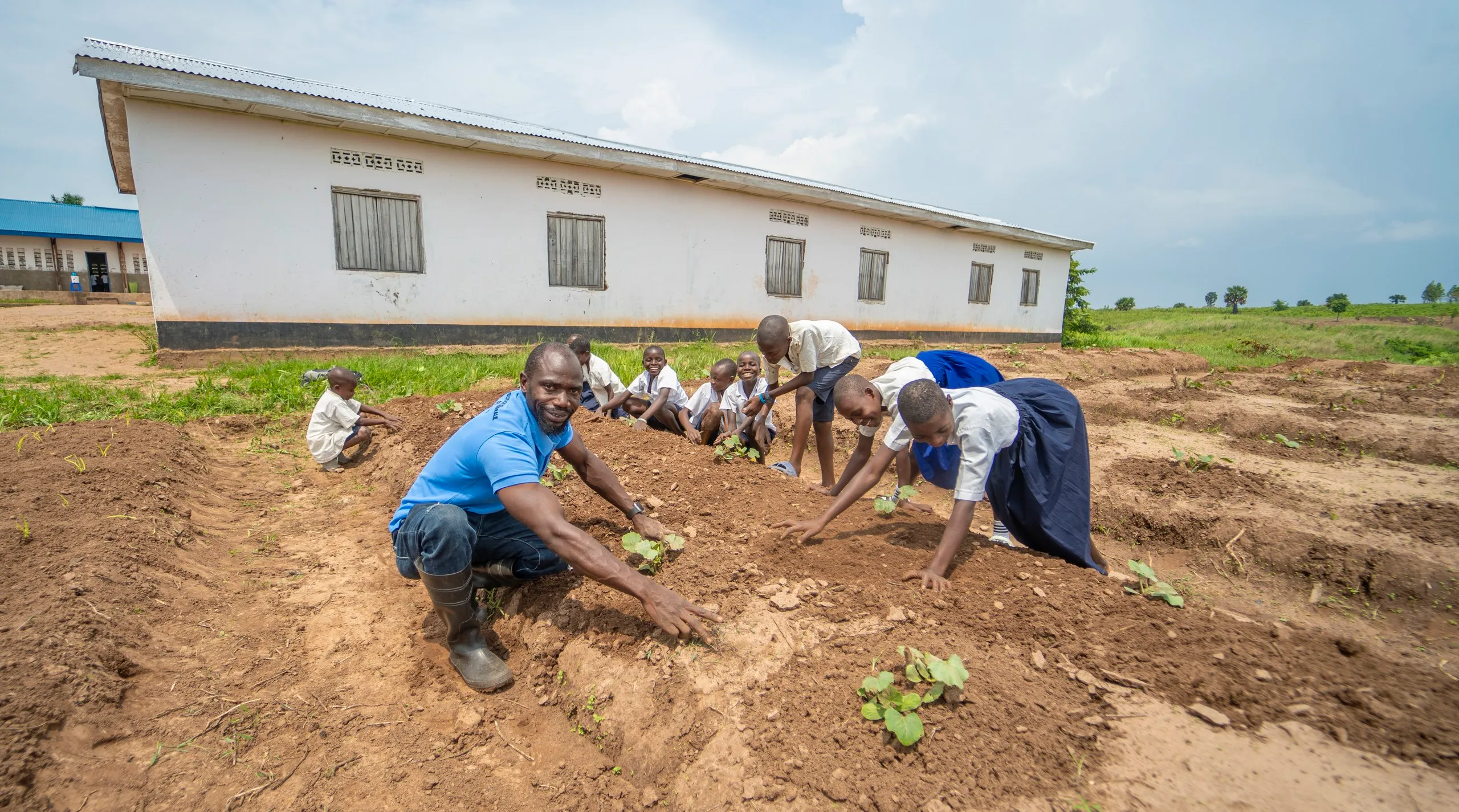
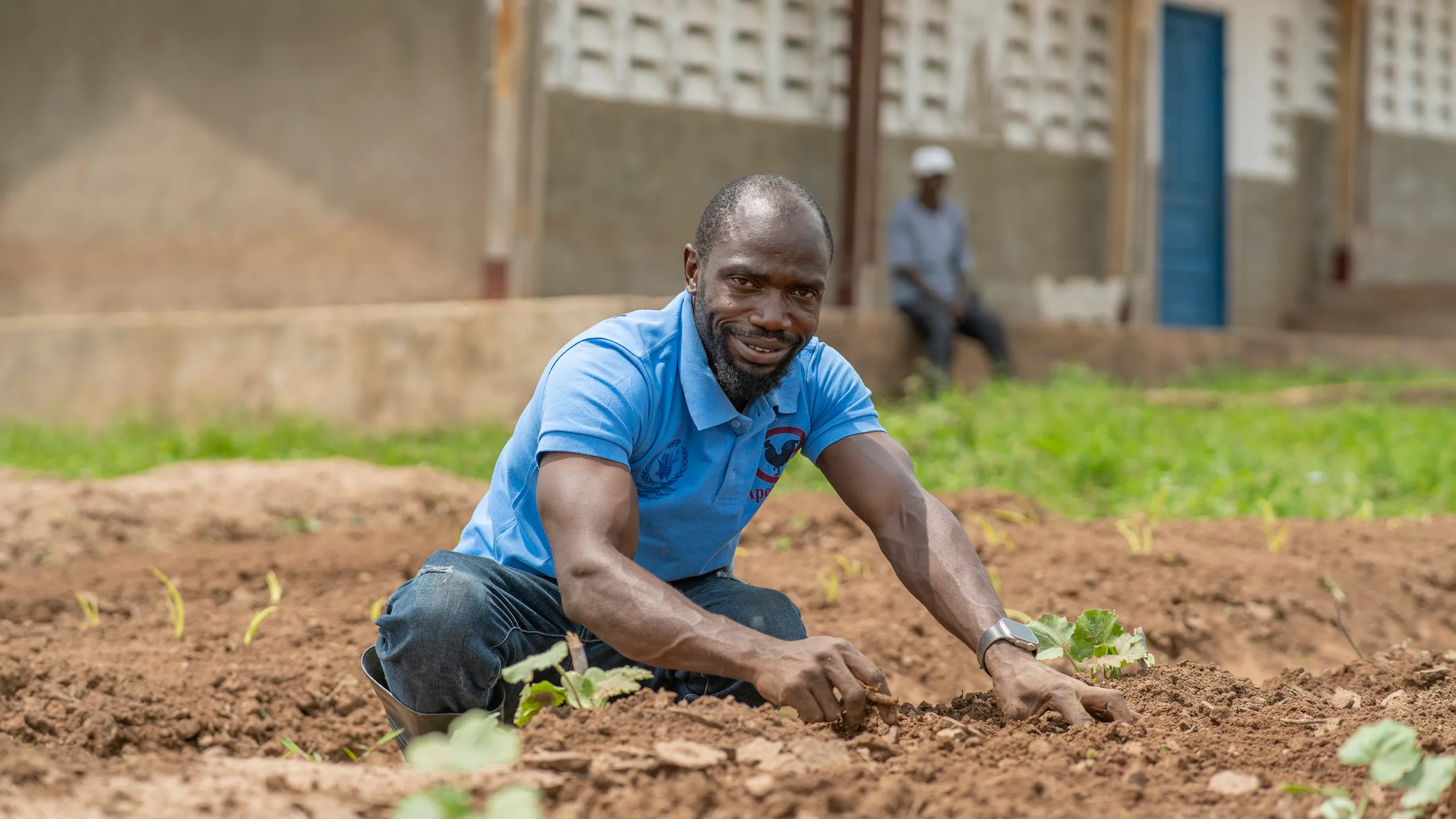
“Since the school meals began, children come to school with enthusiasm. They know they'll learn and eat.”
Marie Kasongo, teacher
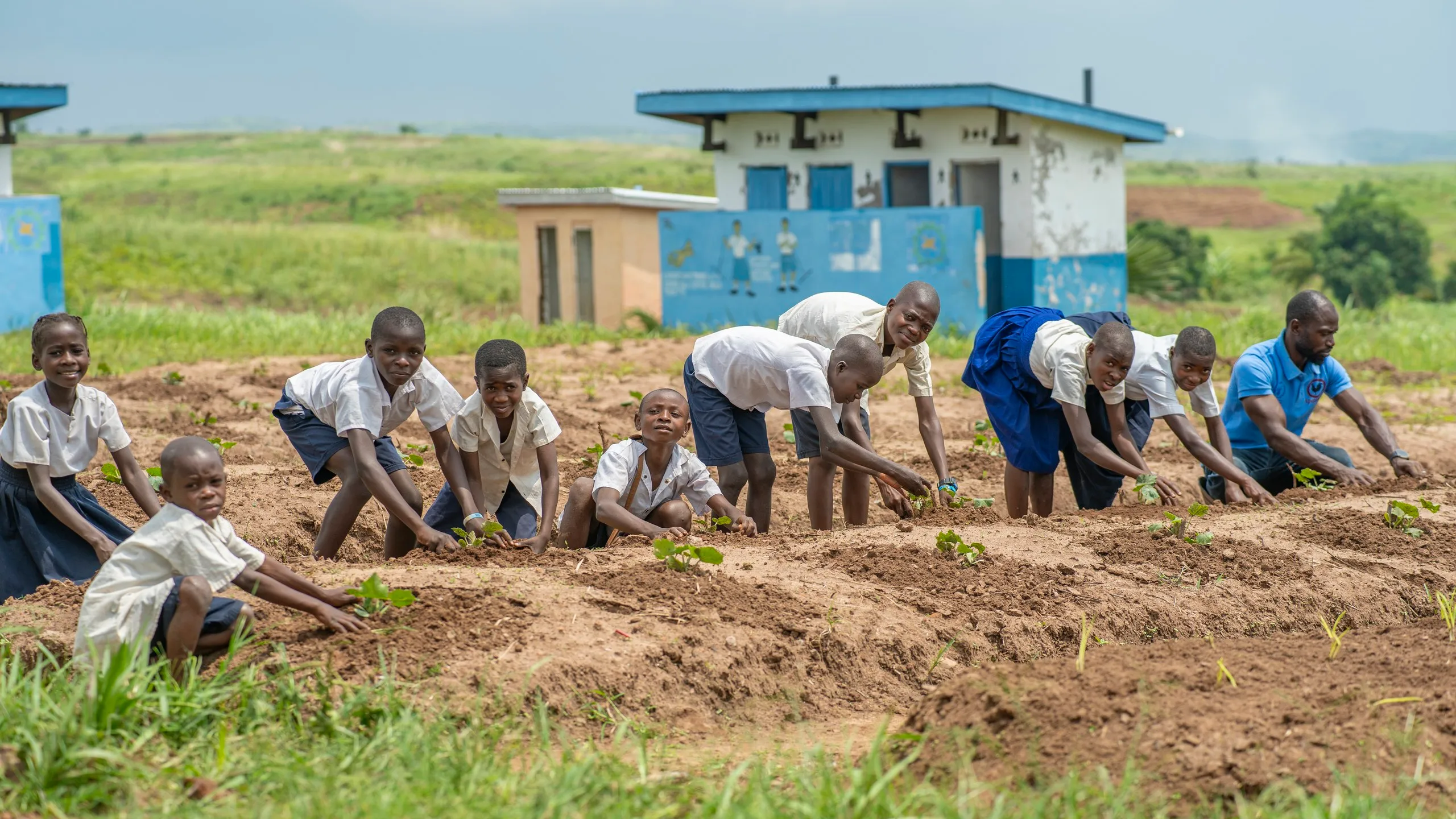
Farmers working on their land
45, Tanganyika
Generose Mbuyi

“My name is Mbuyi Kyongwe Generose. I support the school feeding programme,” she begins, her voice steady with pride. As a parent and community member, Generose is deeply involved in ensuring that children in her village not only have access to education but also the nourishment to thrive.
This year, Generose and her community are growing onions, matembela, and amaranths—essential vegetables that enrich the children's diets. “We plant the seeds, and when they grow, they feed the schoolchildren. We mix the split peas with vegetables when we cook for the children to vary their diet.”
“With food provided at school, children stay in class. They don’t skip lessons or wander off during school time,” she says. “The food benefits both parents and children—it gives the children strength to stay at school and takes away their worries about hunger.”
Her own children are part of this success story. “I have six children at this school,” she says proudly.
Generose's story is a testament to the power of community and resilience. Through her efforts, she not only nourishes young minds but also cultivates hope for a brighter future where education and nutrition go hand in hand.
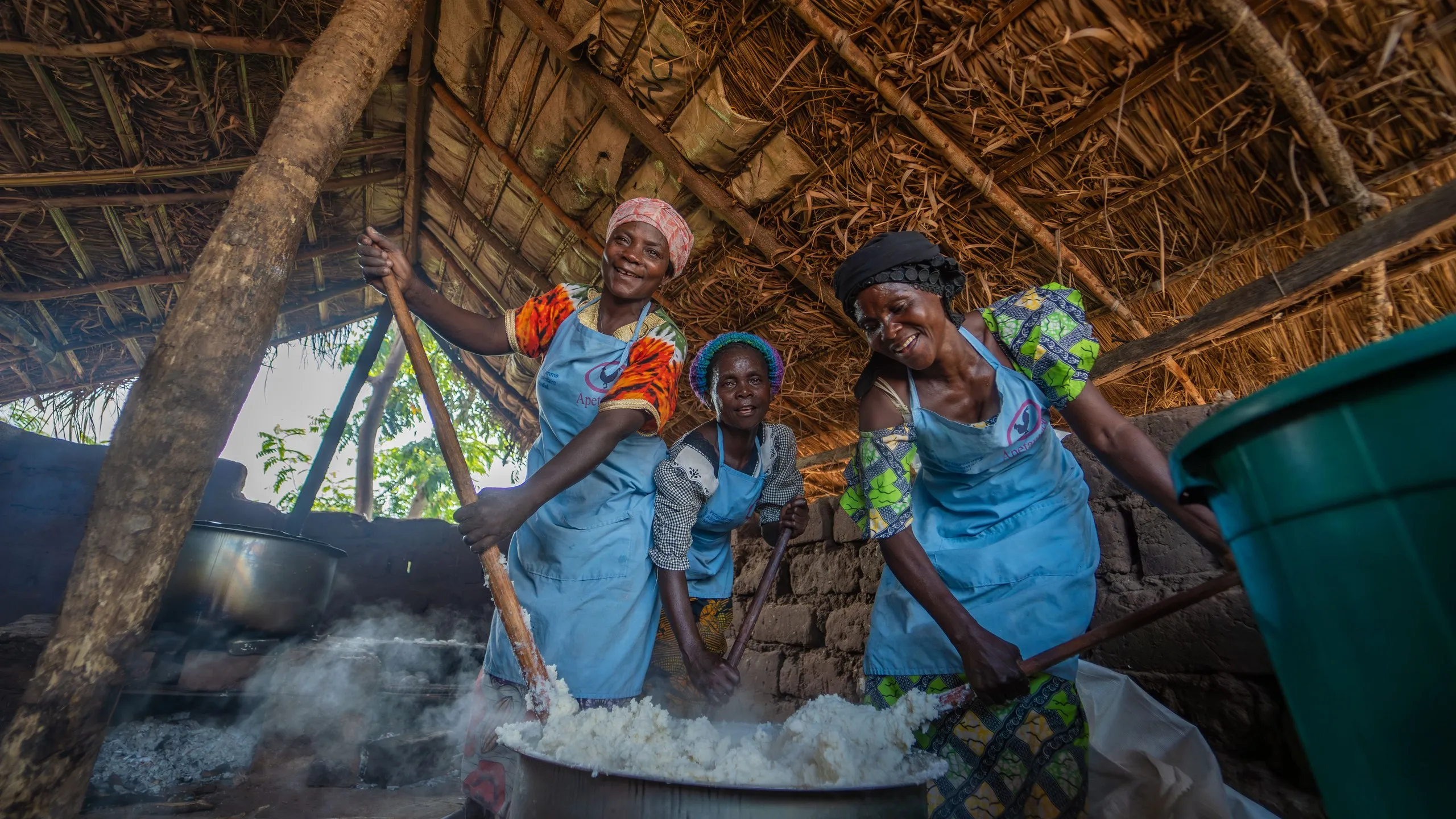

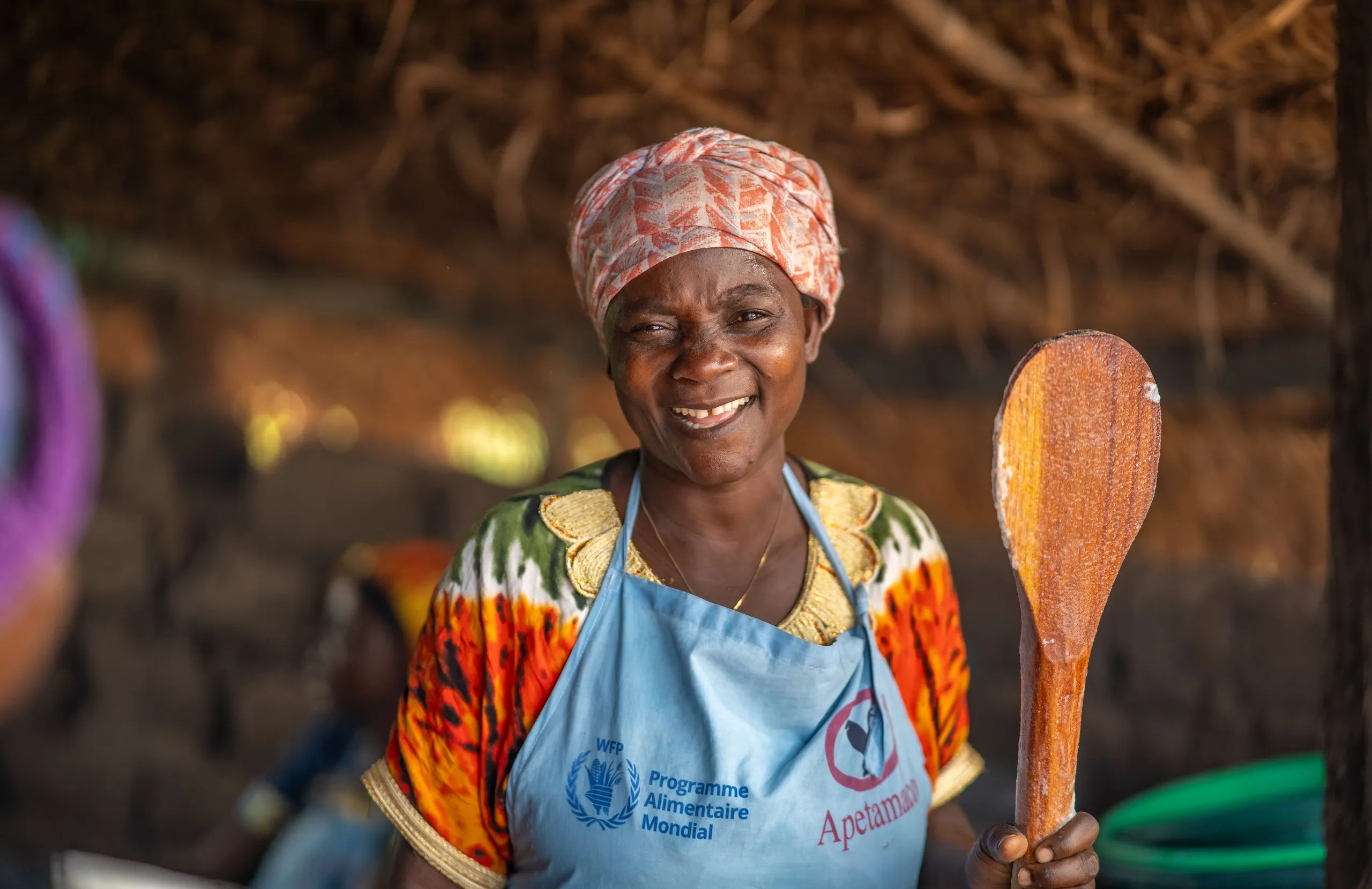
“During my school years, I failed most of the time because hunger forced me to leave classes early or skip them altogether. Now, with food provided at school, children stay, study regularly, and their lives are changing for the better.”

“We are growing onions and two other vegetables, matembela and amaranths, this year. They feed the school children.”
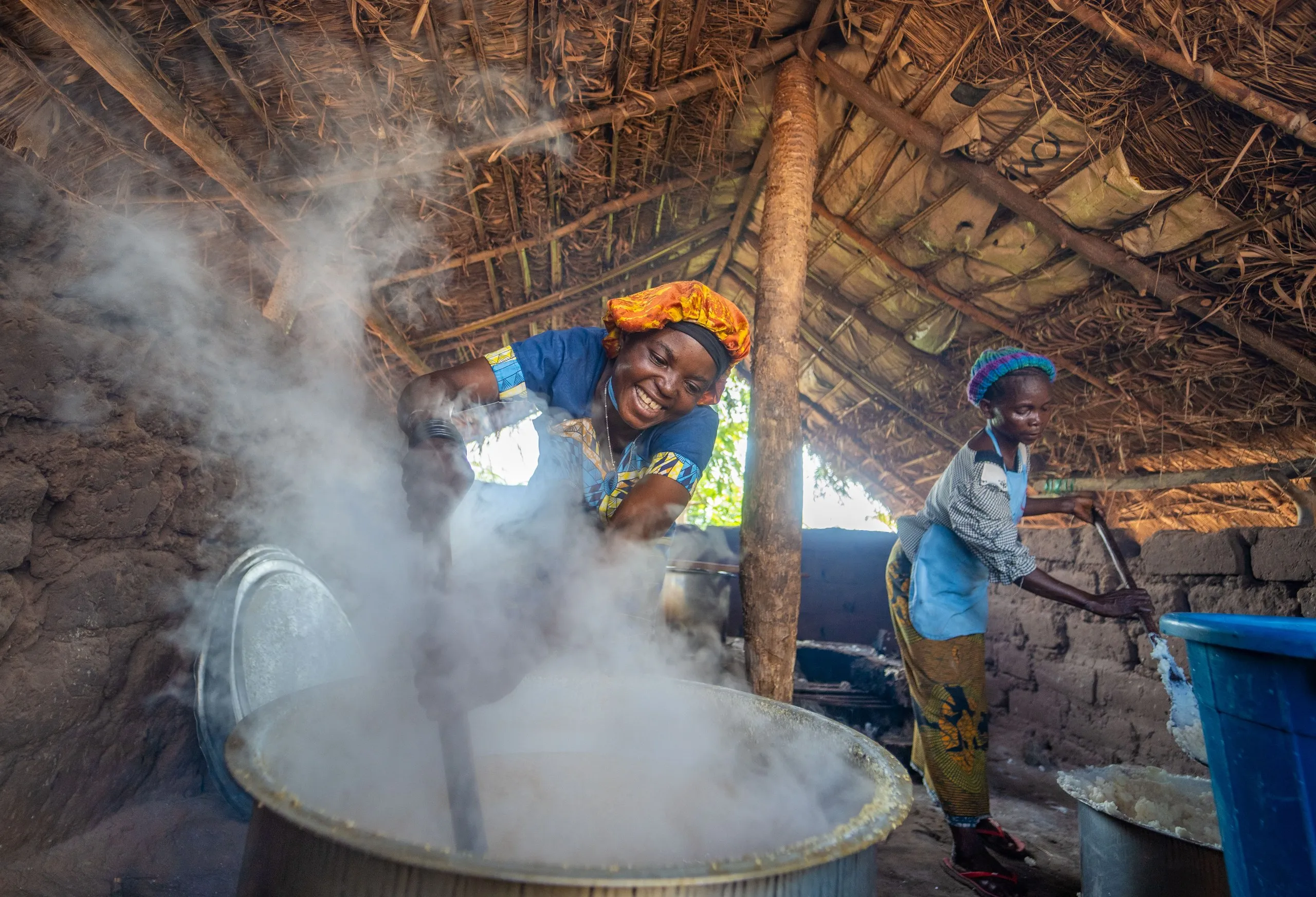
“I have six children at this school. After the classes, they return home feeling strong. The results at school also improved.”
